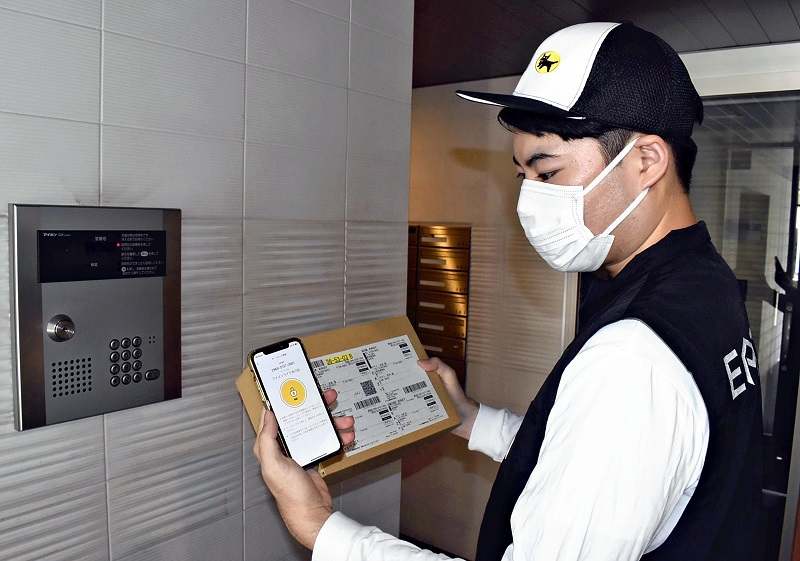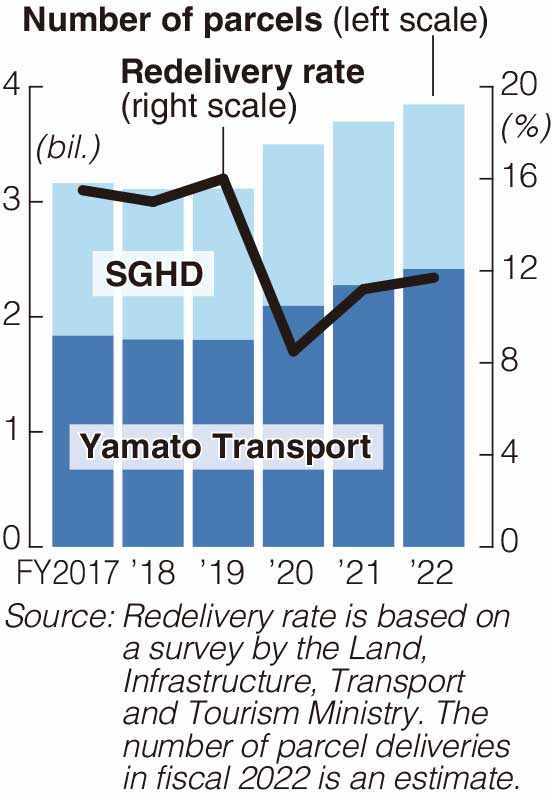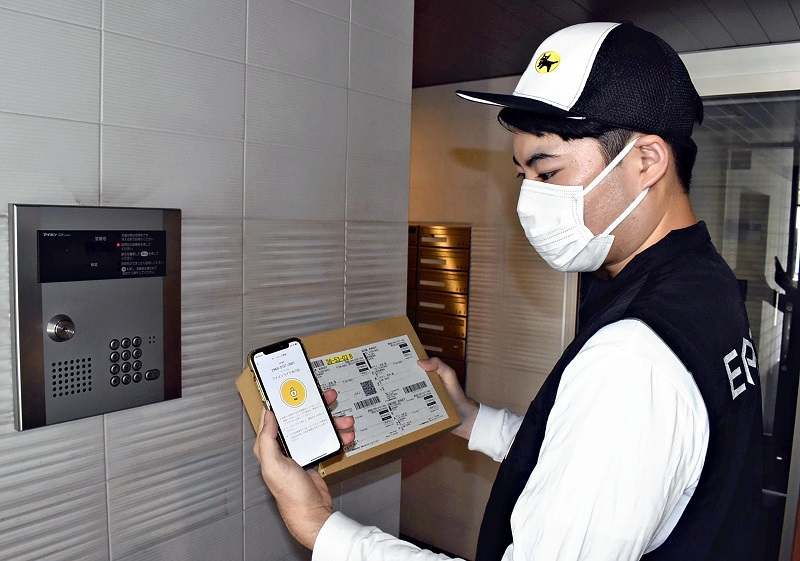Redelivery rate for parcels on the rise again

A delivery person uses his smartphone to open an entrance door at a condominium building in Nerima Ward, Tokyo, on July 5.
By Takeru Kise and Shotaro Masuda / Yomiuri Shimbun Staff Writers
6:00 JST, July 19, 2022

The redelivery rate for home deliveries is rising, placing a growing burden on the logistics industry, which is suffering from a labor shortage. As the number of parcels increases with the spread of internet shopping, companies are trying to maintain their home delivery networks by utilizing digital technology and through inter-company cooperation.
Social problem
According to the Land, Infrastructure, Transport and Tourism Ministry, the redelivery rate in April was up 0.5 points from a year earlier, to 11.7%. The rate had dropped to a record low of 8.5% in April 2020 because people were choosing to stay home as the coronavirus spread. However, the number of people going out increased as economic activity normalized, and some people who had been working at home began going to work. Although the redelivery rate remains lower than before the coronavirus pandemic, it is on the rise again.
The ministry estimates that the extra labor required when the redelivery rate is at 20% is equivalent to 90,000 drivers per year. People in the industry are concerned that “small and medium-sized businesses in rural areas are having a hard time finding workers due to the increased redelivery rate, and if this trend continues, they may be unable to handle it all.”
The ministry considers the high redelivery rate to be a social problem that exacerbates the driver shortage, and has set a target of reducing the redelivery rate to around 7.5% in fiscal 2025. However, the maximum overtime work limit for truck drivers will be restricted to 960 hours per year from April 2024 under work style reform-related laws. There are fears that this could accelerate the labor shortage.
Meanwhile, the volume of parcels continues to increase. Yamato Transport Co. and SG Holdings Co., which owns Sagawa Express Co., handled a total of approximately 3.7 billion parcels in fiscal 2021, a record high for the second consecutive year. With the pandemic, even the elderly are making use of online shopping, and a further increase is expected in fiscal 2022.
‘Digital Key’
It is not easy to immediately solve the driver shortage, and delivery companies are making efforts to reduce redeliveries.
On the morning of July 5, at the entrance of an apartment building in Tokyo, a Yamato Transport delivery driver used a smartphone to unlock an automatic lock. He placed the parcel in front of the recipient’s door and left after sending a photo of the parcel to the recipient.
Yamato Transport started this service in March, allowing recipients to choose “unattended delivery” even if they live in condominiums with automatic locks. Called “Digital Key,” this service allows the smartphone to act as a key the delivery person can use by holding the phone over the barcode on the package, after receiving consent from the recipient. The system has been installed in about 30 buildings in Tokyo, and the company plans to expand the number of buildings to 10,000, mainly in the Tokyo metropolitan area, by the end of this fiscal year.
The use of delivery lockers installed in train stations, supermarkets and other locations is also expanding. Users can pick up packages at their convenience. The cooperation of customers is indispensable for maintaining the home delivery network, and a person from a major home delivery company has said, “We hope that many customers will actively utilize these new ways of receiving parcels.”
Cooperation between rivals in the industry is also progressing. Sagawa and Japan Post Co. have begun joint transport of parcels on some trunk routes and have also begun a trial service where packages that Sagawa is unable to deliver can be picked up at a post office. Shinya Koike, senior executive officer of Japan Post, said, “We work together where we can.”
